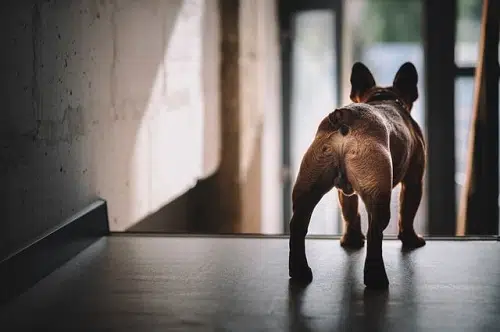Home » Blog » Pet » Pet Health & Safety » A Luxating Patella in Dogs: Signs and Prevention
Categories
Tags
animal welfare
breed profile
buying a car
buying a pet
Car
car accessories
car care
car features
car insurance
Car safety
car sales
car service
cat
cat behaviour
cat body language
Cat Breeds
cat food
cat insurance
comprehensive car insurance
Dog
Dog Behaviour
dog body language
Dog Breeds
dog food
Dog Insurance
dog training
eco friendly cars
Kitten
New Car
pet accessories
pet activities
Pet Adoption
pet breeders
pet days of the year
pet fun stuff
Pet Health
pet insurance
pet parenting
Pet Safety
pet services
Puppy
rescue pets
road safety
road trip
safe driving
Recent Blog:
Facebook Posts
12 hours ago
Are intestinal worms setting up camp in your dog’s gut without paying rent? Here’s how to spot the main culprits and get rid of them too:![]()
![]() Preventing, Identifying and Treating Intestinal Worms in Dogs - bit.ly/43YjCKu
... See MoreSee Less
Preventing, Identifying and Treating Intestinal Worms in Dogs - bit.ly/43YjCKu
... See MoreSee Less
Preventing, Identifying and Treating Intestinal Worms in Dogs
www.pd.com.au
Intestinal worms, such as roundworms in dogs are one of the least glamorous topics on the planet. These intestinal parasites that basically use our dogs
PD Insurance
with Dogs West.
2 days ago
We enjoyed meeting #breeders #doglovers and members at the Dogs West Open Day. Special thanks to our partner Dogs West for organising an incredible event. There is still time to enter our pawsome competition. Click here for details: bit.ly/4covyce![]() #PDinsurance #dogswestopenday #dogswest
... See MoreSee Less
#PDinsurance #dogswestopenday #dogswest
... See MoreSee Less
3 days ago
Did you know? The Manx is a breed that is known for its lack of a tail, which is caused by a genetic mutation.
... See MoreSee Less
Like many things medical, a luxating patella sounds like it may very well be the next villain in a Star Wars movie. And unfortunately, it too is sinister. You might have heard this term before as it’s one of the more common causes of lameness in dogs.
A luxating patella, although it sounds complicated, is simply a dislocated kneecap. But the pain, discomfort and potential long-term issues that come with it are not. So let’s get into what it is, why it happens and how it can be treated.
Luxating patella = dislocated kneecap and worse
Patella is the Latin word for kneecap, and to luxate is to dislocate. So when you put these together, it all makes sense in that this condition is a dislocated knee cap.
As simple as that sounds, a luxating patella is not so simple. Neither to treat, nor to avoid.
This dislocating of the kneecap can cause lameness in dogs, and if it isn’t identified early can become worse and turn into cruciate disease.
We, as good pet parents, are our furbaby’s careful guardians and it’s our duty to look out for things that may be off in our pets. If left untreated, illnesses and diseases in our furry friends can quickly go from a simple procedure to a long and complicated process.

Here are some symptoms to look out for:
- Stiffness
- Limping
- Hopping
- Abnormal walking or function of their back legs
- Difficulty getting up
- Reluctance to run or jump
- Momentary paralysis of the knee joint
A luxating patella in dogs affects the hind legs of our furry companions. So if you see any of these signs in their hind legs, we suggest you let your vet take a closer look.
How does a patella luxate?
Let’s go over how a kneecap works, and how this condition changes that. The kneecap, no surprises, looks like a cap. It floats on top of the knee between muscles and tendons that allow movement when the knee bends and stretches. As the leg bends the muscles and tendons stretch and the kneecap (or patella) moves up and down over the top of the knee.
Now, when a luxating patella is in the mix, the kneecap, instead of moving up and down, shifts to the side when the leg bends. And as you can imagine, this is very unpleasant for your poor furball.
If left untreated, this condition can become more severe and lead to a ruptured cranial cruciate ligament. More info on what that is here.
What causes it?
A luxating patella is usually a genetic condition that’s found in our smaller furry friends. Breeds particularly affected include (note: not an exhaustive list):
- Miniature and Toy Poodles
- French Bulldogs
- Yorkies
- Pomeranians
- Pugs
- Chihuahuas
- Lowchens
It isn’t exclusive to dogs – cats and even humans can be affected.
What you can do to avoid luxating patella in dogs
Like we mentioned above, there are varying degrees of luxating patella in dogs, so treatment will vary. The treatments can include physical therapy, exercise, pain medication, and weight management. It’s important to find exercises that reduce pressure and weight on your dog’s joints.’
The right exercise
We’ve written an article all about exercising dogs without walking with a whole bunch of options you can pick and choose from. What’s great is that these will limit the pressure for a wide range of genetic musculoskeletal conditions.
You can find out more here about your breed’s exercise requirements here.

The right weight
What you may not realise is that being overweight in the doggy world can lead to a wide range of conditions and illnesses. Taking steps towards a healthier lifestyle for your pooch is a huge win for them.
There are so many furtabulous ways to help your dog get (and stay) in good shape. We’ve found an expert to help out and you can find all the info in our article on National Pet Obesity Day.
As you can imagine, the steps above will only help with managing luxating patella in dogs when it’s caught early. Once it reaches the later stages you’ll need to go for corrective surgery. Talk to your vet for advice ASAP if you see any of the signs.

For what you can’t prevent – pet insurance
As pet parents, we do everything in our power to give our furkids the best possible lives. But some things are out of your control. In times of urgency you don’t want to be scrambling over what you can afford, but rather ensuring your pet gets the best care possible. That’s why PD Insurance is in the business of helping dogs get top quality medical treatment by making it affordable for their humans.
We not only have a range of pet insurance plans so you can find one that perfectly suits you, we offer every new customer one or more months of pet insurance cover for free.
Even better, the younger your pet is when you start pet care cover the less likely they’ll have any pre-existing conditions – which means you’ll enjoy broader coverage. That’s a win-win!
Share On:




